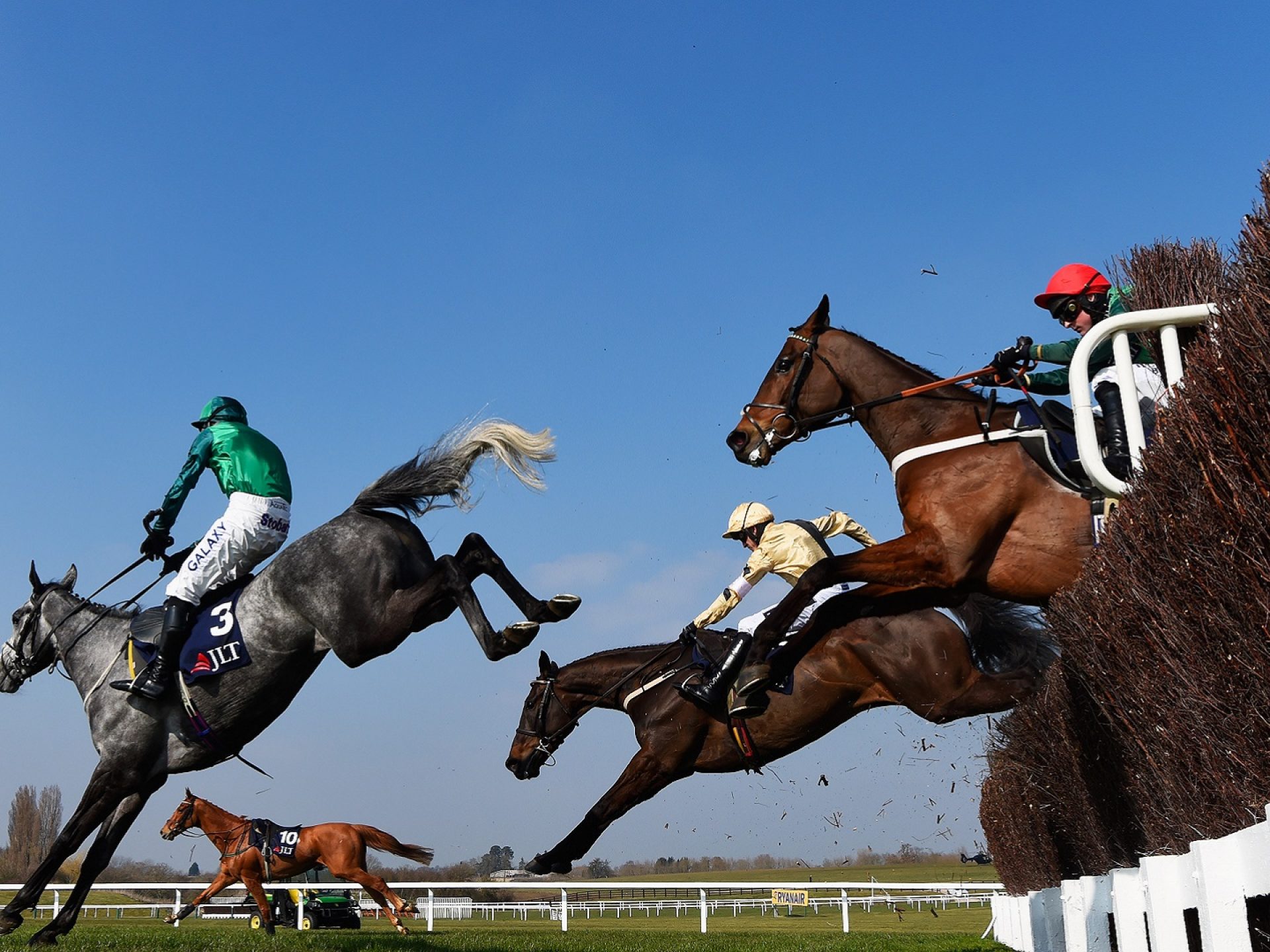Magazine

October 23, 2019

This article was originally published in Populous Magazine, our biannual publication featuring news and trends from the worlds of sport, entertainment, and major public events. Find out more, and sign up to receive a free copy, here.
Irish horses, trainers and jockeys dominate the horse racing discipline known as National Hunt racing, or jumps racing. Award-winning author Julian Muscat examines the historical and cultural reasons.
The roar from the crowd is deafening when the starting tapes rise for the opening race at the Cheltenham Festival. It’s a release of pent-up expectation accumulated over 361 days since the last race at the previous year’s festival was run.
Staged over four days every year in March at the fabled Cheltenham Racecourse, in the west of England, the Cheltenham Festival is considerably more than jumps racing’s Olympics. A mecca for horsemen and fans alike, it has particular resonance for the people of Ireland where this form of racing is totemic.
So while the roar is decibel-loaded, it is timid in comparison to the one that resounds when the winner of that first race emanates from Ireland – as it has in five of the last seven years. Tens of thousands of Irish race-goers making the annual pilgrimage will surround the winner’s circle, their cheers often followed by a folk song redolent of the county in Ireland where the winner is trained. It will inevitably be a rural outpost.
Rural Ireland is the spiritual home of the horse. Farmers still use these animals to till the land in remote areas, and where they don’t, they still keep the odd thoroughbred to race and breed from. It’s a time-honoured tradition in a land where riding prowess remains a great source of pride.
From these humble roots have emerged a succession of champions crowned at Cheltenham; hence the festival’s near-mythical status. Horses like Danoli, who emerged from the wilderness of County Carlow, where he lived under a corrugated iron roof. Danoli landed a colossal gamble at Cheltenham in 1994, after which he became known as “the people’s horse”.
Horse skills remain endemic within a farming-driven economy that embraced mechanisation much later than most.
Unlike their flat-racing counterparts, great jumps horses rely less on superior genes and more on the way they are raised. In this, Ireland comes into its own. Much of its lush pastures are set on a limestone base – the perfect habitat for rearing horses, which are handled by people with horse skills learnt from their forbears. Such skills remain endemic within a farming-driven economy that embraced mechanisation much later than most. The daily connection with horses thus survived for longer.
Horses are so synonymous with Ireland that, for every thoroughbred, there are just 200 or so people. Even the Catholic Church, whose flock account for 75 per cent of Ireland’s 4.8 million people, takes a liberal view of racing – and the betting associated with it. This relationship is epitomised by the late Father Sean Breen, a Cheltenham Festival regular over four decades who blessed Kicking King ahead of that horse’s victory in the 2005 Gold Cup. Well known for his prowess on turf matters, Reverend Breen wrote a weekly racing column for the Kildare Post and was respected as a tipster, having advised his congregation in 2005 that Cardinal Ratzinger had excellent prospects of becoming the next Pope. “A few of the lads got on at 13-2,” he revealed after the cardinal was duly installed. “But I did not back him myself out of reverence.”
Even the Catholic Church, whose flock account for 75% of Ireland’s 4.8 million people, takes a liberal view of racing – and the betting associated with it.
In Ireland, jumps racing is regularly staged at enormously popular venues such as Punchestown (home to the annual Punchestown Festival), Fairyhouse (home of the Irish Grand National), Leopardstown (where the Christmas Festival and Dublin Racing Festival take place), Kilbeggan and Wexford. It’s at point-to-point racing, however, that young horses take their formative steps, and where reputations are established. Point-to-point horses run for minimal prize money, often less than €1,000, but they can become worth up to €400,000. The best of them are jumps racing’s nascent stars.
This serves as a springboard from which Ireland’s horses vault to Cheltenham stardom. At last year’s festival the winners of 14 of 28 races were trained in Ireland, while a further nine were bred in Ireland ahead of their sale to British trainers. Two years earlier, Irish trainers waltzed away with no less than 19 of the 28 races.
Such equine supremacy creates icons of the people associated with them. Vincent O’Brien, an Irish legend, made his name as a trainer of jumps horses. He combined with Tom Dreaper to dominate Cheltenham in the 1950s and 1960s.
The Irish weren’t always dominant, however. In the 1980s the value of jumps horses rose so steeply that Irish racehorse owners were outbid when the most promising youngsters came up for auction. This led to the doomsday scenario of 1989, when Irish trainers returned empty-handed from Cheltenham.
Even the Catholic Church, whose flock account for 75% of Ireland’s 4.8 million people, takes a liberal view of racing – and the betting associated with it.
But the tide turned in the mid-1990s with the advent of the Celtic Tiger, when Ireland’s economy enjoyed a period of rapid growth. Much of this new Irish wealth was spent on horses that would otherwise have been sold to owners across the Irish Sea in Britain. The fortunes of Ireland’s horsemen prospered once more, in the process incubating a new generation of folk heroes.
Take Ruby Walsh, for example. Until his retirement in 2019, he was seen as the consummate rider, largely in his role as stable jockey to Willie Mullins, the dominant trainer in Ireland. Walsh and Mullins are typical products of a closely-knit racing community. Walsh is the son of Ted, a noted amateur rider-turned-trainer who rode Hilly Way to victory in the 1979 Queen Mother Champion Chase at Cheltenham. And Mullins’ father, Paddy, trained the immortal Dawn Run, the only horse ever to win the Champion Hurdle and the Gold Cup.
Plainly, Ireland’s people and its horses are intrinsically linked. As they like to say in racing: “It is all in the blood.”
Lorem ipsum dolor sit amet consectetur, adipisicing elit. Non facere corporis et expedita sit nam amet aut necessitatibus at dolore enim quis impedit eius libero, harum tempore laboriosam dolor cumque.
Lorem, ipsum dolor sit amet consectetur adipisicing elit. Illo temporibus vero veritatis eveniet, placeat dolorem sunt at provident tenetur omnis, dicta exercitationem. Expedita quod aspernatur molestias eum? Totam, incidunt quos.